Cartooning and Unique Characteristics: Cartooning is a versatile art form with distinctive characteristics that set it apart from other visual arts. It combines illustration, humor, and narrative in a way that can communicate ideas, tell stories, and evoke emotions with a unique blend of simplicity and impact. Cartooning’s adaptability allows it to be used in various contexts, from entertainment and education to political commentary and marketing. Here’s an exploration of the unique characteristics of cartooning and its wide range of uses.
Unique Characteristics of Cartooning
1. Simplification and Exaggeration
Simplified Forms
- Essence Over Detail: Cartooning often involves simplifying complex forms into more basic shapes. This simplification allows cartoonists to focus on the essence of a character or scene, making the image more accessible and easily recognizable.
- Iconic Design: The simplicity of cartoon designs makes them more iconic and memorable. For example, Mickey Mouse’s round ears and red shorts are instantly recognizable worldwide.
Exaggeration
- Expressive Features: Cartoonists frequently exaggerate certain features, such as large eyes, oversized heads, or exaggerated expressions, to enhance the character’s personality or the emotional impact of the scene.
- Dynamic Poses: Exaggeration is also used in poses and actions, making movement and emotions more dynamic and engaging. This exaggeration helps convey energy, humor, or tension in a way that more realistic art forms might not.
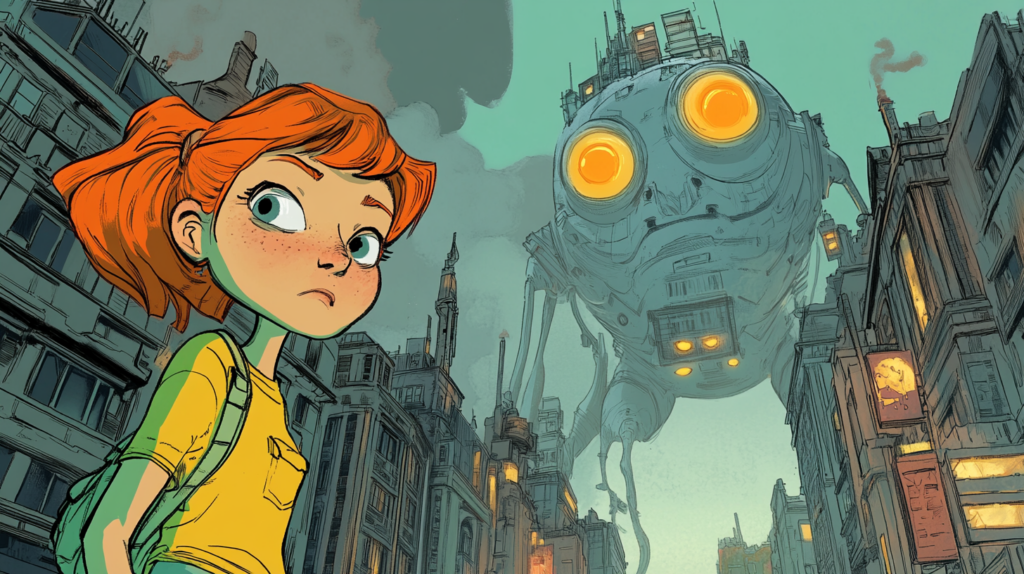
2. Visual Humor and Satire
Humor
- Playful and Accessible: Cartoons are often humorous, using visual puns, slapstick, or absurd scenarios to entertain. This humor can be light-hearted and playful or dark and biting, depending on the cartoonist’s intent.
- Universal Appeal: The simplicity and directness of cartoons make them accessible to a broad audience, regardless of language or cultural background.
Satire
- Commentary on Society: Cartoons have a long history of being used for satire, critiquing politics, society, and human behavior. The exaggerated and simplified nature of cartoons makes them effective tools for highlighting the absurdities or injustices of the world.
- Subversive Power: Through satire, cartoonists can challenge authority and question societal norms in a way that is both entertaining and thought-provoking.
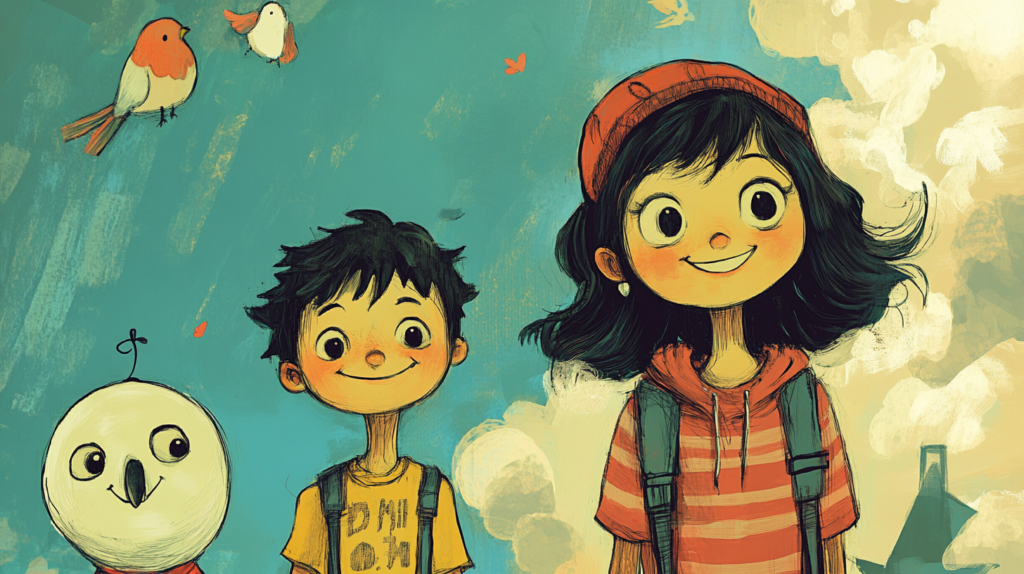
3. Narrative and Storytelling
Sequential Art
- Comic Strips and Webcomics: Cartoons are often presented in sequences, such as comic strips or webcomics, where multiple panels are used to tell a story or convey a progression of events.
- Graphic Novels: Longer-form storytelling through graphic novels allows for deeper narrative exploration while retaining the visual and simplified characteristics of cartooning.
Single-Panel Cartoons
- One-Shot Stories: Single-panel cartoons are powerful in their ability to tell a complete story or convey a complex idea in just one image. This form of cartooning requires a keen sense of timing and a strong punchline or message.

4. Character Design and Iconography
Memorable Characters
- Iconic Characters: Cartooning is known for creating characters that become cultural icons, like Bugs Bunny, SpongeBob SquarePants, or Charlie Brown. These characters are designed to be visually distinct and instantly recognizable.
- Symbolism: Cartoon characters often embody specific traits or symbols, making them shorthand for particular ideas or cultural references.
Relatable Archetypes
- Universal Themes: Cartoon characters often represent universal archetypes, such as the hero, the trickster, or the underdog. These archetypes make the characters relatable and their stories more engaging.
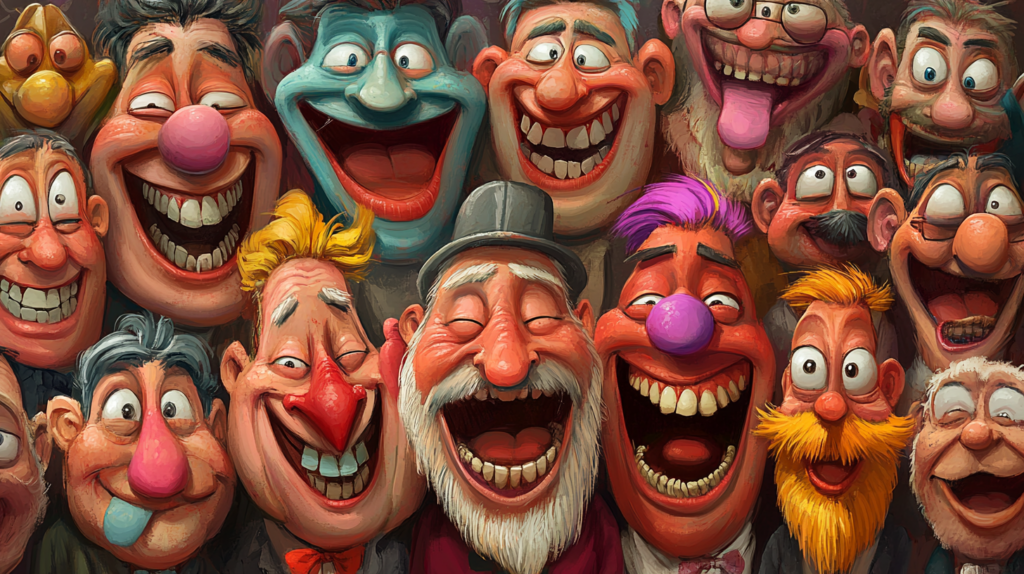
Uses of Cartooning
1. Entertainment
Animation and TV Shows
- Children’s Programming: Cartoons have a strong presence in children’s entertainment, from classic Saturday morning cartoons to modern animated series. These shows often use bright colors, engaging characters, and simple storylines to captivate young audiences.
- Adult Animation: Cartooning isn’t just for kids. Shows like The Simpsons, Family Guy, and Rick and Morty use animation to tackle adult themes with humor, satire, and sometimes dark comedy.
Comics and Graphic Novels
- Comic Books: Superhero comics, manga, and independent comics use cartooning to tell a wide range of stories, from action-packed adventures to intimate, personal narratives.
- Graphic Novels: The graphic novel format allows for more complex storytelling, blending visual art with literary depth. Notable examples include Maus by Art Spiegelman and Persepolis by Marjane Satrapi.
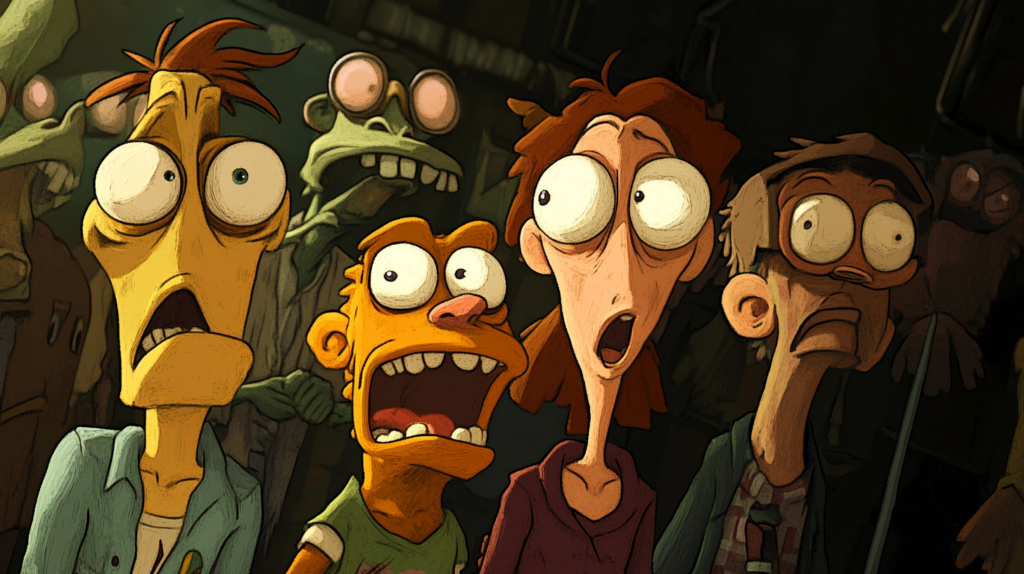
2. Education
Visual Learning Tools
- Educational Cartoons: Cartoons are often used in educational materials to make learning more engaging and accessible. They can simplify complex concepts, making them easier for students to understand.
- Interactive Cartoons: In digital education, interactive cartoons and animations are used to teach subjects like math, science, and history in a more dynamic and interactive way.
Comics in Classrooms
- Teaching Literacy: Comics and graphic novels are increasingly used in classrooms to promote literacy. Their combination of text and visuals can help struggling readers better understand and engage with the material.
- Cultural and Social Education: Graphic novels like American Born Chinese by Gene Luen Yang are used to explore themes of identity, culture, and social issues in an accessible way for students.

3. Political and Social Commentary
Editorial Cartoons
- Political Satire: Editorial cartoons have long been a staple of newspapers and magazines, using humor and satire to comment on current events, politics, and societal issues. They often use caricature and symbolism to critique political figures and policies.
- Historical Impact: Throughout history, editorial cartoons have played a significant role in shaping public opinion, from the propaganda cartoons of World War II to modern-day commentary on global issues.
Activism and Advocacy
- Raising Awareness: Cartoons are often used in activism to raise awareness about social, environmental, and political issues. Their ability to distill complex topics into simple, impactful images makes them effective tools for advocacy.
- Social Media Campaigns: In the digital age, cartoons are widely shared on social media to promote causes, challenge injustices, and spark conversations.
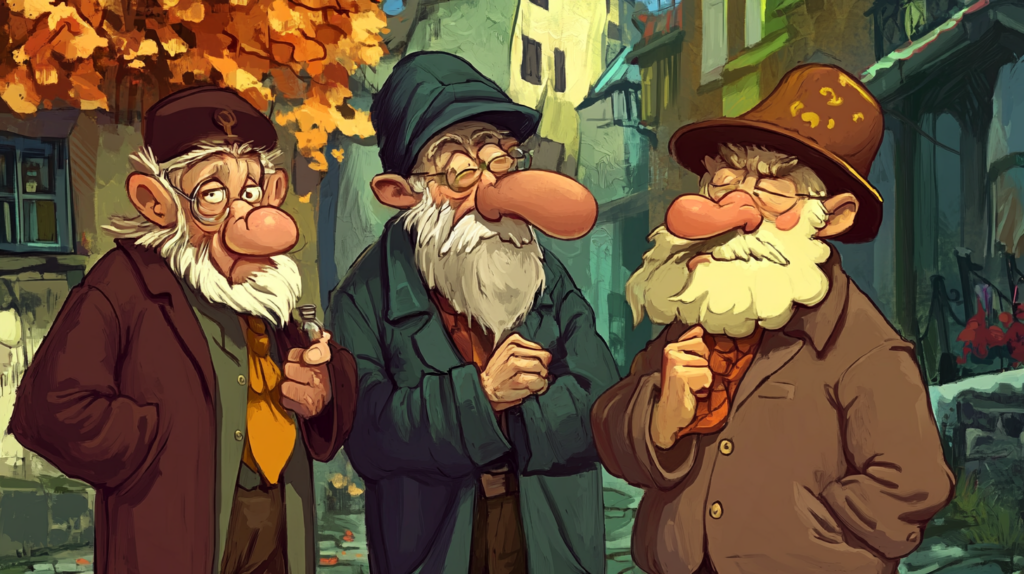
4. Marketing and Branding
Mascots and Brand Characters
- Brand Identity: Companies often use cartoon mascots to create a friendly and approachable brand identity. Characters like the Michelin Man, Tony the Tiger, and the Geico Gecko are examples of how cartooning can help humanize a brand.
- Product Differentiation: Unique cartoon characters can help differentiate a product in a crowded market, making it more memorable and appealing to consumers.
Ad Campaigns
- Humor in Advertising: Cartoons are used in advertising to create humorous and engaging ads that capture attention and make the brand message more relatable.
- Explainer Videos: Animated explainer videos use cartooning to simplify and explain products or services, making them more understandable and attractive to potential customers.
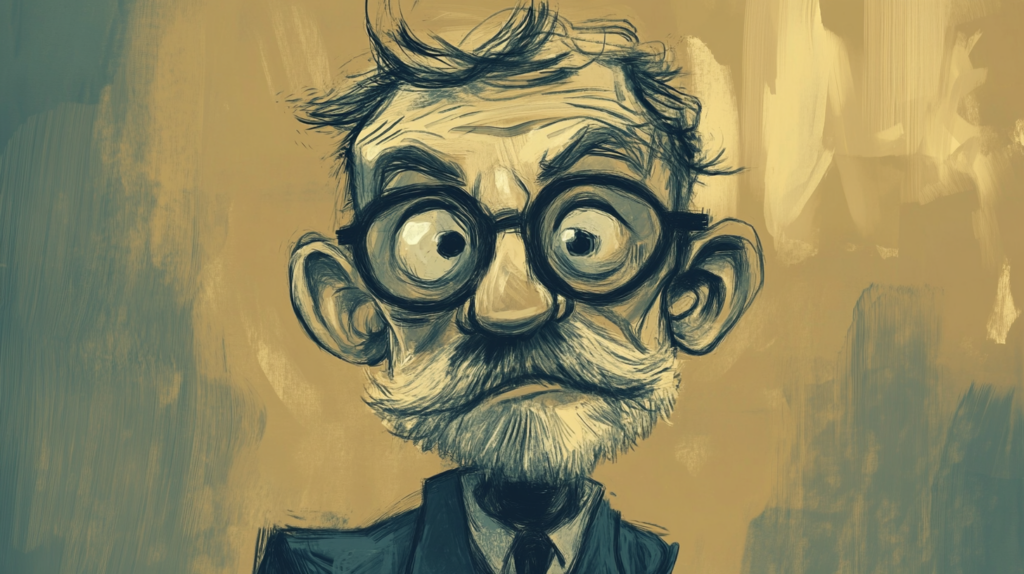
5. Therapeutic Uses
Art Therapy
- Expressing Emotions: Cartooning can be used in art therapy to help individuals, especially children, express emotions and thoughts that might be difficult to articulate in words.
- Building Confidence: Creating cartoons can boost confidence and self-esteem, allowing individuals to explore their creativity and see tangible results from their efforts.
Therapeutic Storytelling
- Narrative Therapy: In narrative therapy, cartooning can be used to help individuals reframe their life stories in a positive way, using characters and stories that reflect their personal experiences and challenges.
The Power and Versatility of Cartooning
Cartooning is a unique art form that combines simplicity, humor, and narrative power. Its characteristics—such as simplification, exaggeration, visual humor, and iconic character design—make it a versatile tool for various purposes, from entertainment and education to political commentary and marketing. By understanding and harnessing these unique characteristics, cartoonists can create impactful work that resonates with audiences, communicates complex ideas, and even brings about social change. Whether through a funny comic strip, a powerful editorial cartoon, or an engaging brand mascot, cartooning continues to be a dynamic and influential medium in our visual culture.
Frequently Asked Questions: Cartooning and Its Unique Characteristics and Uses
What are the unique characteristics of cartooning?
- Exaggeration: Cartoons often feature exaggerated characteristics and expressions to emphasize emotions, humor, or specific traits of characters.
- Simplification: They use simplified forms and lines, reducing complex images to their essential elements for clarity and impact.
- Visual Metaphors: Cartoons frequently employ visual metaphors and symbols to represent ideas or concepts in a straightforward manner.
- Bold Colors and Lines: Use of bright colors and strong, clean lines helps in capturing attention and conveying messages effectively.
- Humor and Satire: Cartoons often incorporate humor, satire, or irony to comment on societal, political, or everyday issues.
What are the different uses of cartoons?
- Entertainment: Cartoons are used in entertainment media such as television shows, movies, and online content to engage and amuse audiences.
- Education: They serve as educational tools in classrooms and educational materials to simplify complex subjects and make learning more enjoyable.
- Advertising: In advertising, cartoons capture attention and convey messages in a memorable and engaging way, often with a humorous twist.
- Political Commentary: Cartoons are used in editorial and political contexts to provide commentary on current events, social issues, or political figures.
- Social Media: They are widely used on social media platforms to engage users with entertaining and shareable content.
How do cartoons contribute to storytelling?
- Character Development: Cartoons allow for the creation of distinct and memorable characters that can drive narratives and engage audiences.
- Visual Storytelling: Through illustrations and visual sequences, cartoons can tell stories and convey messages without relying heavily on text.
- Emotional Impact: The combination of expressive visuals and humor or drama enhances the emotional impact of the story being told.
What are some common techniques used in cartooning?
- Exaggeration: Emphasizing certain features or expressions to enhance the comedic or dramatic effect.
- Simplified Design: Using basic shapes and minimalistic design to ensure clarity and focus on key elements.
- Dynamic Poses: Depicting characters in exaggerated or dynamic poses to convey action, emotion, or personality.
- Dialogue and Captions: Incorporating text elements like dialogue bubbles or captions to add context, humor, or additional information.
What makes cartoons effective in communicating messages?
- Clarity: The use of simplified visuals helps in making complex ideas or messages easily understandable.
- Engagement: Humor and visual appeal capture attention and engage viewers more effectively than traditional methods.
- Relatability: Cartoons often reflect everyday experiences and emotions, making them relatable to a broad audience.
- Memorability: The combination of humor, visual impact, and clear messaging makes cartoons memorable and effective in reinforcing key points.
How can cartoons be used in educational contexts?
- Visual Explanations: Cartoons can illustrate abstract concepts and processes in a more tangible and understandable way.
- Engaging Content: They make learning more engaging by incorporating humor and relatable characters into educational materials.
- Simplified Learning: Complex subjects can be broken down into simpler, visual elements that are easier for students to grasp.
What are the benefits of using cartoons in advertising?
- Attention-Grabbing: Cartoons stand out in advertisements, grabbing viewers’ attention with their unique and eye-catching style.
- Brand Personality: They help in establishing a brand’s personality and creating a memorable image through engaging characters or themes.
- Emotional Connection: Humor and relatable scenarios in cartoons can create a positive emotional connection with the audience.
- Critique and Satire: Cartoons use satire to critique and comment on political figures, policies, or social issues in a way that can provoke thought and discussion.
- Accessibility: They make complex or contentious issues more accessible and understandable to a broader audience through simplified visual representations.
- Impact: The humor and exaggeration used in political cartoons can make serious messages more impactful and memorable.
What are some challenges faced in cartooning?
- Balancing Humor and Sensitivity: Finding the right balance between humor and sensitivity, especially in political or social commentary, can be challenging.
- Keeping Content Fresh: Staying creative and original in a field that relies heavily on visual and conceptual novelty requires continuous innovation.
- Audience Reception: Ensuring that cartoons resonate with and are understood by the target audience requires careful consideration of their preferences and context.
How can one develop a personal style in cartooning?
- Experimentation: Experiment with different techniques, styles, and subjects to find what resonates with you and defines your unique voice.
- Study Influences: Analyze the work of other cartoonists and artists to understand various styles and incorporate aspects that align with your vision.
- Practice: Regular practice and creation of cartoons help in refining your style and making it more distinct and recognizable.
- Feedback: Seek feedback from peers, mentors, and audiences to refine and develop your style further.
By understanding these aspects of cartooning, you can leverage its unique characteristics effectively for various purposes, from entertainment and education to advertising and commentary.
This post was created with our nice and easy submission form. Create your post!









